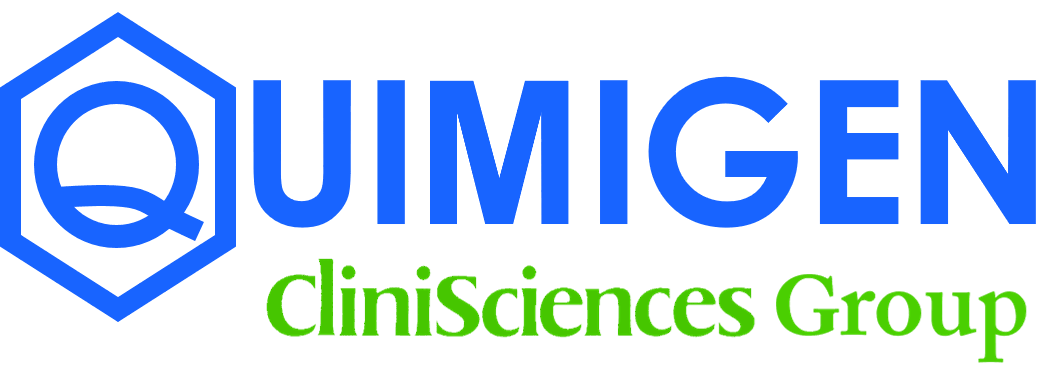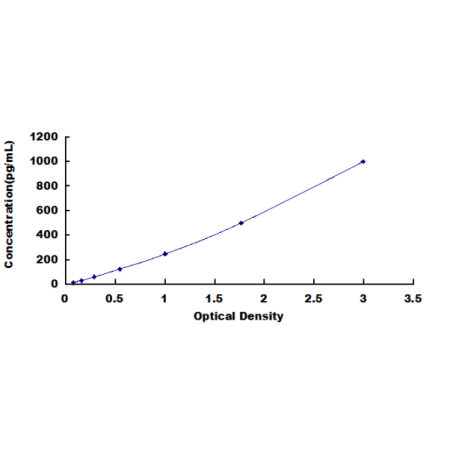IFNG ELISA Kit (Monkey)
Referencia OKDD03834-96Wells
embalaje : 96Wells
Marca : Aviva Systems Biology
| Datasheets/Manuals | Printable datasheet for IFNG ELISA Kit (Monkey) (OKDD03834) |
|---|
| Predicted Species Reactivity | Macaca fascicularis|Rhesus Monkey | ||||||||||||||||||||
|---|---|---|---|---|---|---|---|---|---|---|---|---|---|---|---|---|---|---|---|---|---|
| Application | ELISA | ||||||||||||||||||||
| ELISA Kit Detection Method | Colorimetric, OD450 nm | ||||||||||||||||||||
| ELISA Kit Duration | 1 - 3.5 hours | ||||||||||||||||||||
| ELISA Kit Linearity | The linearity of the kit was assayed by testing samples spiked with appropriate concentration of the index and their serial dilutions. The results were demonstrated by the percentage of calculated concentration to the expected.
| ||||||||||||||||||||
| ELISA Kit Principle | The microtiter plate provided in this kit has been pre-coated with an antibody specific to the index. Standards or samples are then added to the appropriate microtiter plate wells with a biotin-conjugated antibody preparation specific to the index. Next, Avidin conjugated to Horseradish Peroxidase (HRP) is added to each microplate well and incubated. After TMB substrate solution is added, only those wells that contain the index, biotin-conjugated antibody and enzyme-conjugated Avidin will exhibit a change in color. The enzyme-substrate reaction is terminated by the addition of sulphuric acid solution and the color change is measured spectrophotometrically at a wavelength of 450nm +- 10nm. The concentration of the index in the samples is then determined by comparing the O.D. of the samples to the standard curve. | ||||||||||||||||||||
| ELISA Kit Range | 15.6-1000pg/mL | ||||||||||||||||||||
| ELISA Kit Recovery | Matrices listed below were spiked with certain level of recombinant the index and the recovery rates were calculated by comparing the measured value to the expected amount of the index in samples.
| ||||||||||||||||||||
| ELISA Kit Reproducibility | Intra-assay Precision (Precision within an assay): 3 samples with low, middle and high level the index were tested 20 times on one plate, respectively. Inter-assay Precision (Precision between assays): 3 samples with low, middle and high level the index were tested on 3 different plates, 8 replicates in each plate. CV(%) = SD/meanX100 Intra-Assay: CV < 10% Inter-Assay: CV < 12% | ||||||||||||||||||||
| ELISA Kit Component |
| ||||||||||||||||||||
| :: | Stability: The stability of ELISA kit is determined by the loss rate of activity. The loss rate of this kit is less than 5% within the expiration date under appropriate storage conditions. Note: To minimize unnecessary influences on the performance, operation procedures and lab conditions, especially room temperature, air humidity, and incubator temperatures should be strictly regulated. It is also strongly suggested that the whole assay is performed by the same experimenter from the beginning to the end. | ||||||||||||||||||||
| Reconstitution and Storage | 12 months shelf life. For unopened kits: All the reagents should be kept at 4C upon receipt. For opened kits: Once the kit is opened, the remaining reagents still need to be stored according to the above storage conditions. In addition, return the unused wells to the foil pouch containing the desiccant pack and reseal along entire edge of zip-seal. | ||||||||||||||||||||
| Sample Type | serum, plasma, tissue homogenates, cell lysates, cell culture supernates or other biological fluids. | ||||||||||||||||||||
| Sensitivity | 6.1pg/mL | ||||||||||||||||||||
| Specificity | This assay has high sensitivity and excellent specificity for detection of IFNG. No significant cross-reactivity or interference between IFNG and analogues was observed. | ||||||||||||||||||||
| Assay Info | Assay Methodology: Quantitative Sandwich ELISA |
| Gene Symbol | IFNG |
|---|---|
| Gene Full Name | interferon gamma |
| Alias Symbols | IFN-gamma;interferon gamma. |
| NCBI Gene Id | 102128291 |
| Protein Name | Interferon gamma |
| Description of Target | Type II interferon produced by immune cells such as T-cells and NK cells that plays crucial roles in antimicrobial, antiviral, and antitumor responses by activating effector immune cells and enhancing antigen presentation. Primarily signals through the JAK-STAT pathway after interaction with its receptor IFNGR1 to affect gene regulation. Upon IFNG binding, IFNGR1 intracellular domain opens out to allow association of downstream signaling components JAK2, JAK1 and STAT1, leading to STAT1 activation, nuclear translocation and transcription of IFNG-regulated genes. Many of the induced genes are transcription factors such as IRF1 that are able to further drive regulation of a next wave of transcription. Plays a role in class I antigen presentation pathway by inducing a replacement of catalytic proteasome subunits with immunoproteasome subunits. In turn, increases the quantity, quality, and repertoire of peptides for class I MHC loading. Increases the efficiency of peptide generation also by inducing the expression of activator PA28 that associates with the proteasome and alters its proteolytic cleavage preference. Up-regulates as well MHC II complexes on the cell surface by promoting expression of several key molecules such as cathepsins B/CTSB, H/CTSH, and L/CTSL (By similarity). Participates in the regulation of hematopoietic stem cells during development and under homeostatic conditions by affecting their development, quiescence, and differentiation (By similarity). |
| Uniprot ID | P63309 |




